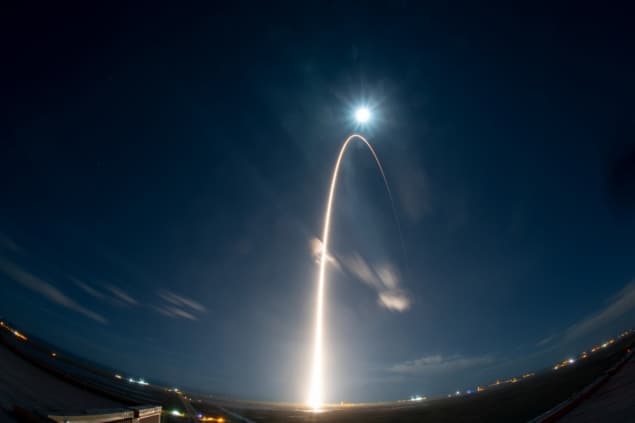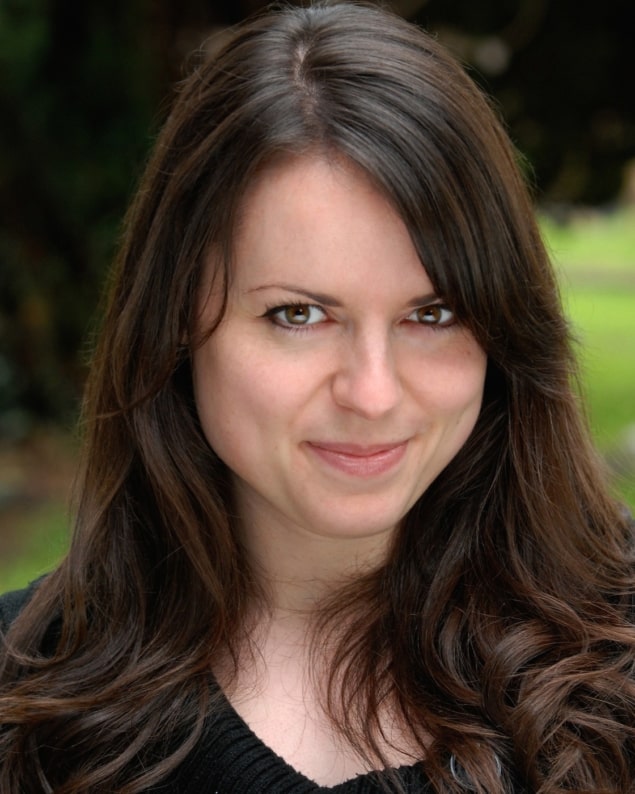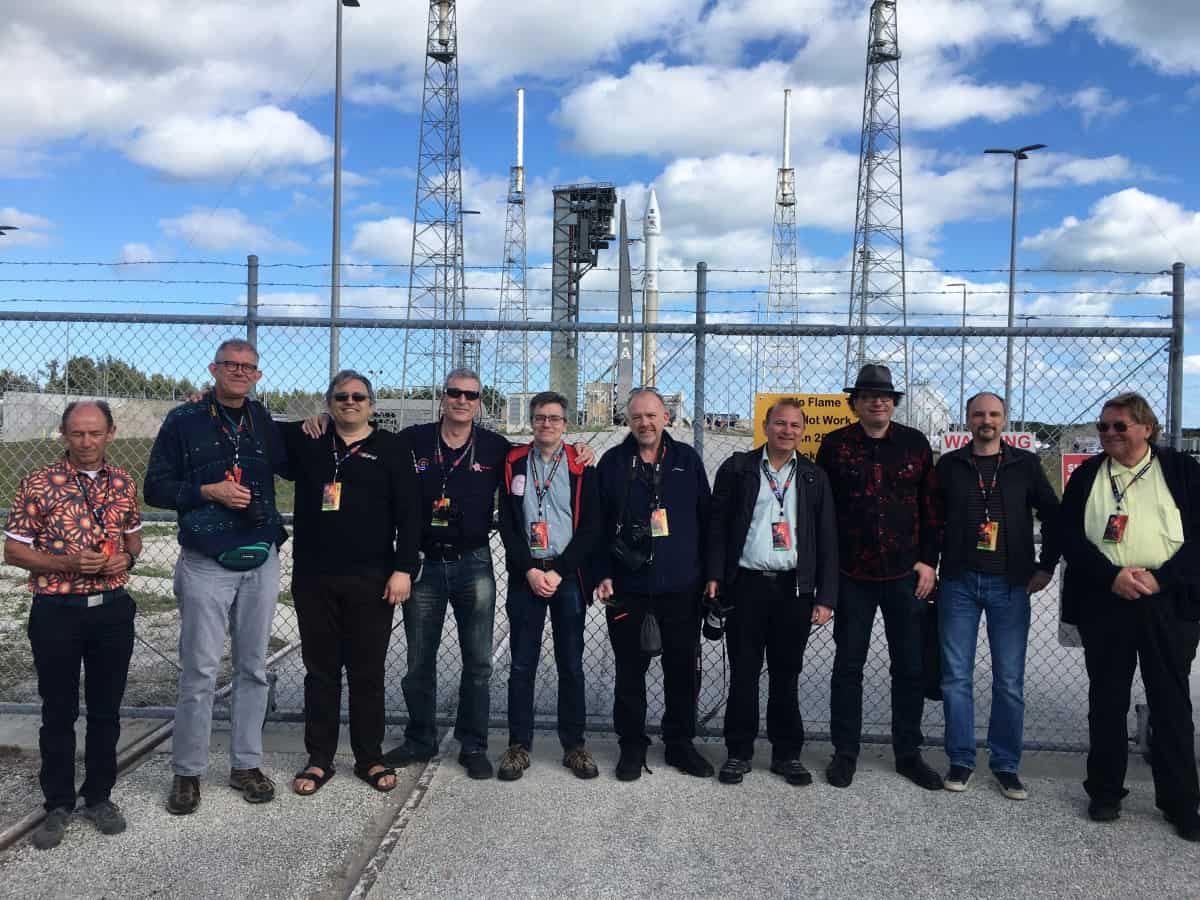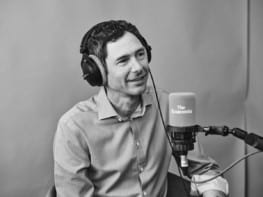University College London’s MSc in space science and engineering offers graduate physicists a unique opportunity to learn from and work with world-leading research teams who are defining and delivering future space missions

For some science students, the path from undergraduate degree to career of choice is a linear and seemingly friction-free transition. For others, less so. Stephanie Mottershead, a project manager at Surrey Satellite Technology Ltd (SSTL), a UK manufacturer of small satellite systems, definitely falls into the second category. After completing a BSc in geology and environmental science at the University of Bristol, Mottershead walked straight into a tanking graduate jobs market and a wider economy reeling from the aftershocks of the 2008 financial crash.
Needs must, though, and Mottershead spent the next decade or so on a very different career trajectory, working as a professional singer in London and on various luxury cruise ships. Her passion for science undimmed, she also managed to study part-time for an Open University (OU) degree in physics and astronomy. “I loved the planetary-science modules in my OU course and it gradually dawned on me that I could do something with this professionally,” she explains. “Rather than continue with music as a career and science as a hobby, I made the decision to switch things around.”
Mottershead’s reinvention took off in 2017 when she secured a European Space Agency (ESA) scholarship to attend the International Space University’s Space Studies Program in Cork, Ireland. This nine-week residential “summer space camp” brings together around 250 delegates each year, among them early-career scientists and engineers intent on forging a path in the space industry alongside established professionals seeking to broaden their knowledge of the space sector beyond their current discipline. “The Space Studies Program was an incredible experience,” says Mottershead. “To meet and learn from a network of experts and peers like that really opened my eyes to the range of career paths available within the space industry.”
Own the space
Spurred on by her experience in Cork, Mottershead wrapped up her OU degree in double-quick time and set her sights on UCL’s MSc in space science and engineering. “The 12-month programme at UCL aligned with my desire to combine planetary science and space engineering,” she says. “I wanted to pursue both and the mix of taught-course modules ties everything together really well.”

Another factor in Mottershead’s choice of UCL is the reputation of the teaching and research staff. “You get to learn from world-leading experts in all fields of space science,” she explains. “For our individual research projects, we also got to work with scientists and engineers at UCL’s Mullard Space Science Laboratory (MSSL) – all of whom are actively involved on high-profile space missions like the recently launched Solar Orbiter (see box, below).”
The taught element of the MSc course, which takes up the first six months of the programme, is followed by an individual research project and dissertation, a group research project (involving the full MSc cohort), plus exams for good measure. “There’s no let up at all,” adds Mottershead. “It’s the most intense thing I’ve ever done, but massively rewarding at the same time.”
In terms of specifics, the lecture programme comprises a series of compulsory modules: space data systems and processing; space instrumentation and applications; space science, environment and satellite missions; and space systems engineering. That core learning is reinforced with a series of optional modules, including planetary atmospheres; solar physics; high-energy astrophysics; space plasma and magnetospheric physics; remote sensing; and global monitoring and security.
Although she was awarded an MSc with distinction, Mottershead admits there were times during the course when she and other students struggled with the workload. “Alongside the MSc, I was working 20 hours a week to pay the bills,” she explains. “With hindsight, I realize that wasn’t such a great idea. It’s important for prospective students to commit 100% to this course and minimize any distractions.”
My space
With so much going on, Mottershead ranks the group research exercise as one of the high-points of her experience, with all 24 MSc students working collectively to scope out a full-lifecycle mission concept and spacecraft design – in this case, a mission to Uranus.
Working to a three-week deadline, the students break into smaller functional teams to cover all aspects of the mission architecture, including the fundamental scientific questions the mission will seek to address; spacecraft design and scientific instrumentation; trajectory and orbital planning; as well as all of the telecommunications.
“It’s meant to be tough,” explains Mottershead. “The idea is to give students a taste of what a big science project looks like in terms of the intensity, the teamworking and multidisciplinary collaboration, as well as the granular scope of the work programme. It was stressful for sure, but also incredibly satisfying.”
The individual research dissertation provided another highlight, allowing Mottershead to collaborate with senior MSSL scientists (Andrew Coates and Geraint Jones) on a new mission concept. “I subsequently got to present this work to an audience of space-industry professionals, including representatives from NASA and ESA, when I was invited to take a slot at the International Planetary Probe Workshop [IPPW] in Oxford,” she adds.
After graduating last autumn, Mottershead took her first steps into the space industry with a project management role at SSTL. The company, a wholly owned subsidiary of aerospace giant Airbus, bills itself as “the world’s leading small-satellite manufacturer”, serving an international customer base that includes the likes of NASA, ESA and SpaceX.
“Right now,” notes Mottershead, “every day is different and I’m learning a lot – and fast – about people management, collaboration and coordination across different project teams. Longer term, I’m keen to get closer again to the hands-on space science. I have a strong personal interest in remote sensing – using satellites to study climate change, deforestation and disaster monitoring.”
- Applications for UCL’s MSc in space science and engineering are open now. Deadline: 24 July 2020.
Solar Orbiter: flying close to the Sun

It’s unlikely that Chris Owen, professor of physics at UCL’s Mullard Space Science Laboratory (MSSL), will ever forget where he was on the evening of 9 February 2020. Hardly surprising given that he was high-fiving colleagues in Cape Canaveral, Florida, after witnessing the successful launch of ESA’s €1.4 billion Solar Orbiter mission – a spacecraft that, once it reaches its operational orbit in two years’ time, will use an array of 10 scientific instruments to deliver the most detailed images yet of the Sun and its outer atmosphere as well as unprecedented in situ measurements of the solar wind, the continuous stream of high-speed charged particles emanating from the Sun’s surface.
Owen, for his part, is principal investigator for one of those scientific instruments – the mission’s Solar Wind Analyser (SWA) – and heads up an international science and engineering consortium that will, over the next decade, use the SWA’s sensors to better understand the physics of space weather. Here he talks to Physics World about big-science collaboration and the benefits for UCL’s MSc students of proximity to the staff and projects at MSSL.
What role will the SWA play on Solar Orbiter?
The Sun emits a constant stream of high-speed charged particles into the heliosphere (a vast, bubble-like region that extends from the Sun to the edge of the Solar System). This solar wind influences Earth’s near-space system – sometimes disrupting satellite communications and, on occasion, even damaging or destroying orbiting spacecraft. The SWA will carry out a range of in situ measurements on this particle stream – something akin to “sniffing” the solar wind.
Who built the SWA?
The SWA is a case study in international collaboration. There are three sensors on the instrument: the one we built here at MSSL will study electrons in the solar wind; the sensor for protons and alpha particles was built mostly in France and the Czech Republic; while a US team supported by NASA led the development of the sensor for heavy ions such as iron, carbon and oxygen. All three sensors are controlled by a central electronics box built in Italy, while Airbus UK developed the spacecraft as well as the heatshield technology that will protect it while orbiting close to the Sun.
How do your MSc students benefit from MSSL’s involvement in high-profile missions like Solar Orbiter?
At MSSL, we are the largest university-based space science lab in the UK, covering all core space science and engineering disciplines in one department. At any given time, we’re participating in a range of big science projects that, by definition, have to be multidisciplinary and international in scope. That means our MSc students get to learn from leading space scientists and engineers involved in defining and delivering new space missions. Our MSc is attractive in terms of its subject coverage and scope, but also because of MSSL’s strategic position within the space science ecosystem. We have a lot of connections within the space industry and that can open doors for our researchers and students.
Are there opportunities for MSc students to get involved directly with missions like Solar Orbiter?
Absolutely – that’s the norm rather than exception at MSSL. Last year, for example, one of my MSc students undertook a project to investigate spacecraft charging in the solar wind – and specifically the impact that this behaviour might have on the SWA’s measurements of charged particles. The student in question used simulation tools to build and “test” a virtual Solar Orbiter spacecraft in an effort to understand the underlying physics, with the behaviours predicted by her simulations feeding into the wider ESA research on this issue.
What does the future hold for MSSL and your MSc programme?
These are exciting times for MSSL. We’re working on a number of high-profile future missions, including Plato (to drive new discoveries in exoplanetary science), Euclid (mapping of the dark Universe) and the PanCam scientific cameras for the ExoMars 2020 Rover (scheduled to arrive on Mars in April 2023). All of these missions will translate into incredible learning and research opportunities for our MSc students.




